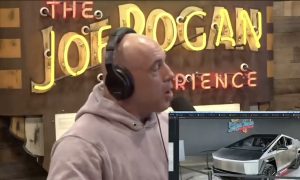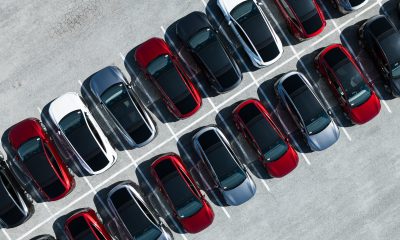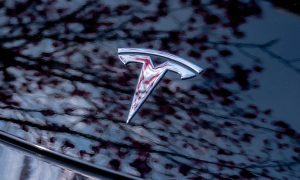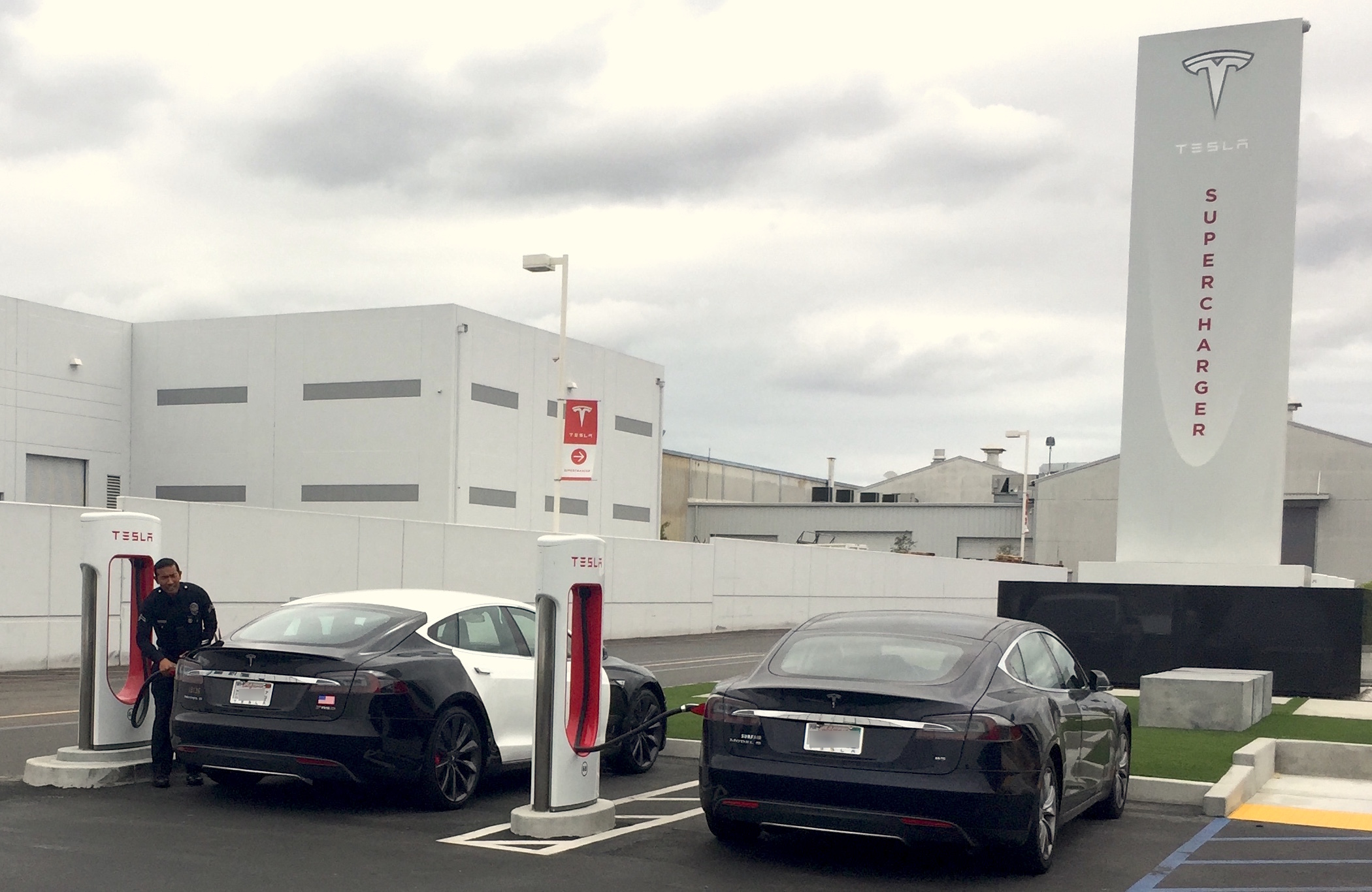

News
LAPD to begin testing its Tesla fleet for use as a patrol car
A year after Los Angeles mayor Eric Garcetti first announced that the city will begin testing a pair of Tesla Model S for use within its police force, the department is ready to take the vehicles to the next level by gearing them for patrol car use.
Earlier tests of the two Model S P85D on loan to the LAPD from Tesla determined that the vehicles have adequate range and performance needed for patrol duty, however suffered from a price tag that is substantially higher than the typical patrol car. But as Los Angeles continues to campaign for a reduction in greenhouse gas emissions by 80% before 2050, so are the divisions operating within the city of angels.
Vartan Yegiyan, the assistant commander of the department’s administrative services bureau, tells NBC Channel 4 that Tesla will work with the department to retrofit that car with the radios, computer, custody cage, locking shotgun rack, and other equipment normally found in a patrol car. After the accessories are installed, the car will be placed into service as a patrol car to see how it stands up to the rigors of police duty. Yegiyan says the car will be tested in the field by an on-duty patrol sergeant who will be driving to emergencies and possibly even take part in pursuits of suspects.
Though the Model S is far too expensive to replace its fleet of conventional patrol cars, the police department usually looks five years down the road when considering the purchase of future cars for its fleet. Yegiyan says the department would prefer to choose electric cars for its patrol fleet in five years if any are available that are affordable. Electric patrol cars would help the department meet the city’s overall carbon reduction goals.
Mayor Garcetti says the electric cars will cost less to maintain and operate than conventional cars. They will also play an important role in the city’s campaign to reduce its greenhouse gas emissions by 80% before the year 2050. “Today, we take another step toward becoming the most sustainable city in America,” the mayor told reporters. “This year, Los Angeles will become home to the largest city-owned fleet of pure battery electric vehicles anywhere in the country, and we will save taxpayer dollars along the way.”
The city will be expanding its electric car charging infrastructure in the coming years to service its existing fleet of electric and plug-in hybrid cars it is now using, which includes one hundred battery electric BMW i3s. If electric patrol cars become economically feasible, the LAPD will already have the charging system needed to keep them in service.
The experiment is in Tesla’s interests as the LAPD says it is willing to share what it learns with other law enforcement agencies. If Tesla can satisfy the needs of one of the largest police departments in the country in both performance and price, that could open a significant new market for the company.
Elon Musk
Tesla Full Self-Driving gets full unhinged review from Joe Rogan
Joe Rogan recently said Tesla Full Self-Driving is “f***ing insane”
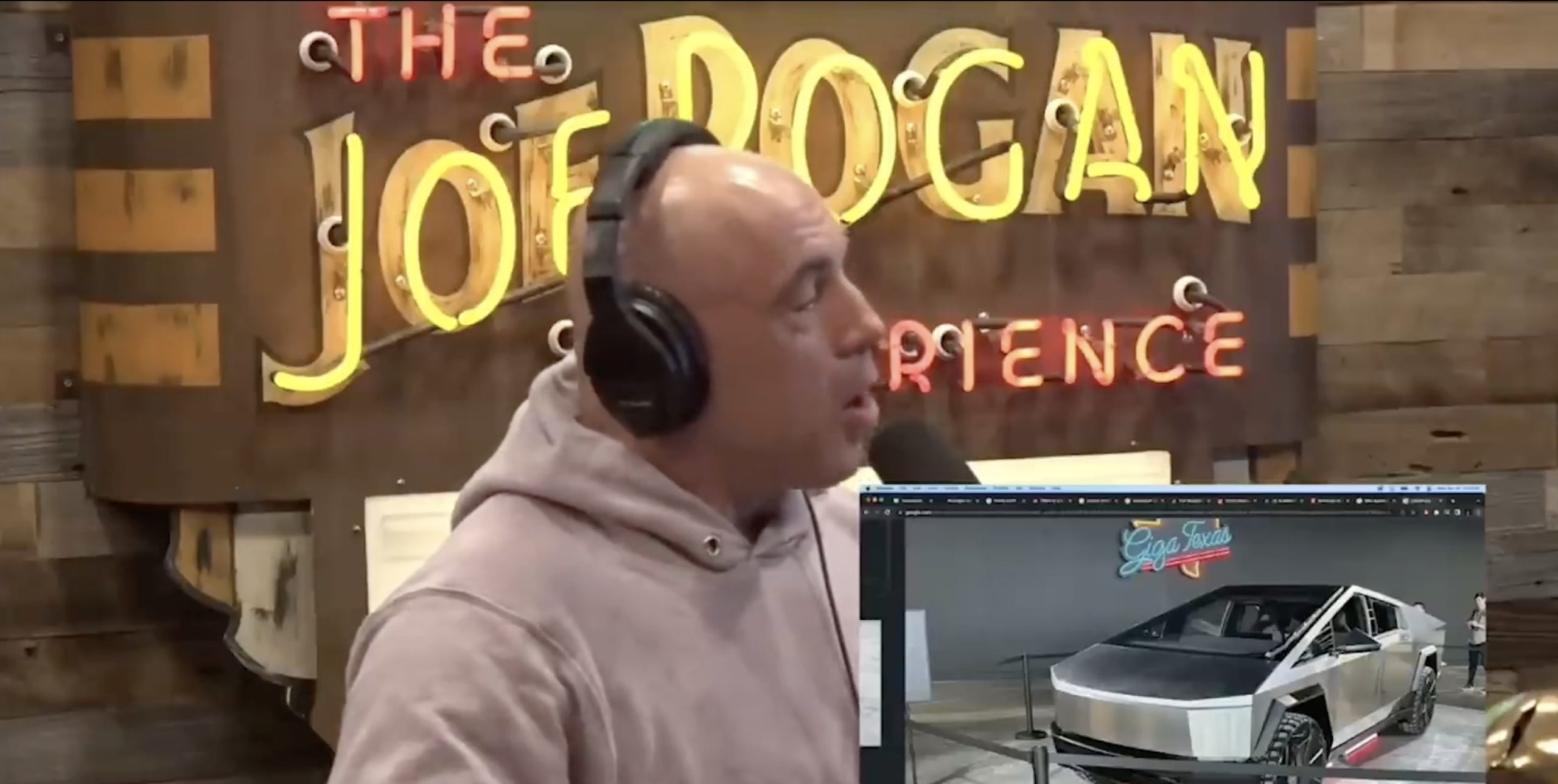
Tesla, and certainly its CEO, Elon Musk, both have a fan in Joe Rogan, but his recent comments about the company’s Full Self-Driving suite could potentially be the most notable yet.
Rogan is a massive fan of Musk and has had him on his podcast more than five times. Perhaps some of the coolest Tesla details have been revealed on the Joe Rogan Experience, and it has resulted in the UFC commentator and podcaster purchasing several Teslas, including a completely decked-out Model S Plaid.
However, Rogan recently gave his two cents on the Full Self-Driving suite, which is among the most robust Advanced Driver Assistance Systems (ADAS) in the world, and many people will be happy to hear what he said.
Rogan posted on X:
“I had my Tesla Model S drive me home the other day with FSD, and it’s f**king wild. Changes lanes to avoid slow traffic, stops at red lights and stop signs, hits the blinkers, and turns for you. It’s bananas.”
I had my Tesla model S drive me home the other day with FSD, and it’s fucking wild. Changes lanes to avoid slow traffic, stops at red lights and stop signs, hits the blinkers and turns for you. It’s bananas. https://t.co/Ir8dU9Zopg
— Joe Rogan (@joerogan) April 15, 2025
The FSD suite is not fully autonomous, as it still requires the operator’s attention, but it is a hands-free driving suite. As it has become more advanced, Tesla has allowed drivers to keep their hands off the wheel as long as they pay attention. Their eyes are tracked with a cabin-facing camera that ensures they are paying attention and ready to take over at any time.
In the past months, the FSD suite has continued to be refined, and new versions have been released to the public. In fact, Tesla has become so confident in its abilities, it recently opened up its Early Access Program (EAP) to more owners, allowing them to experience more advanced software releases before they are given to those who either have a subscription or have purchased the FSD suite.
Rogan’s comments reflect those of many other Tesla owners. In our twice-weekly X Spaces, we talk to many owners who state they have completely abandoned manual driving, and FSD is in operation for a vast majority of their drive.
Tesla plans to launch a robotaxi ride-hailing service in Austin in June, and it could be brought to even more cities by the time the year ends, as discussions with California are also in the works.
Elon Musk
Tesla reportedly suspended Cybercab and Semi parts order amid tariff war: Reuters
A new report claims Tesla is suspending the order of some parts for the Cybercab and Semi from China due to tariffs.
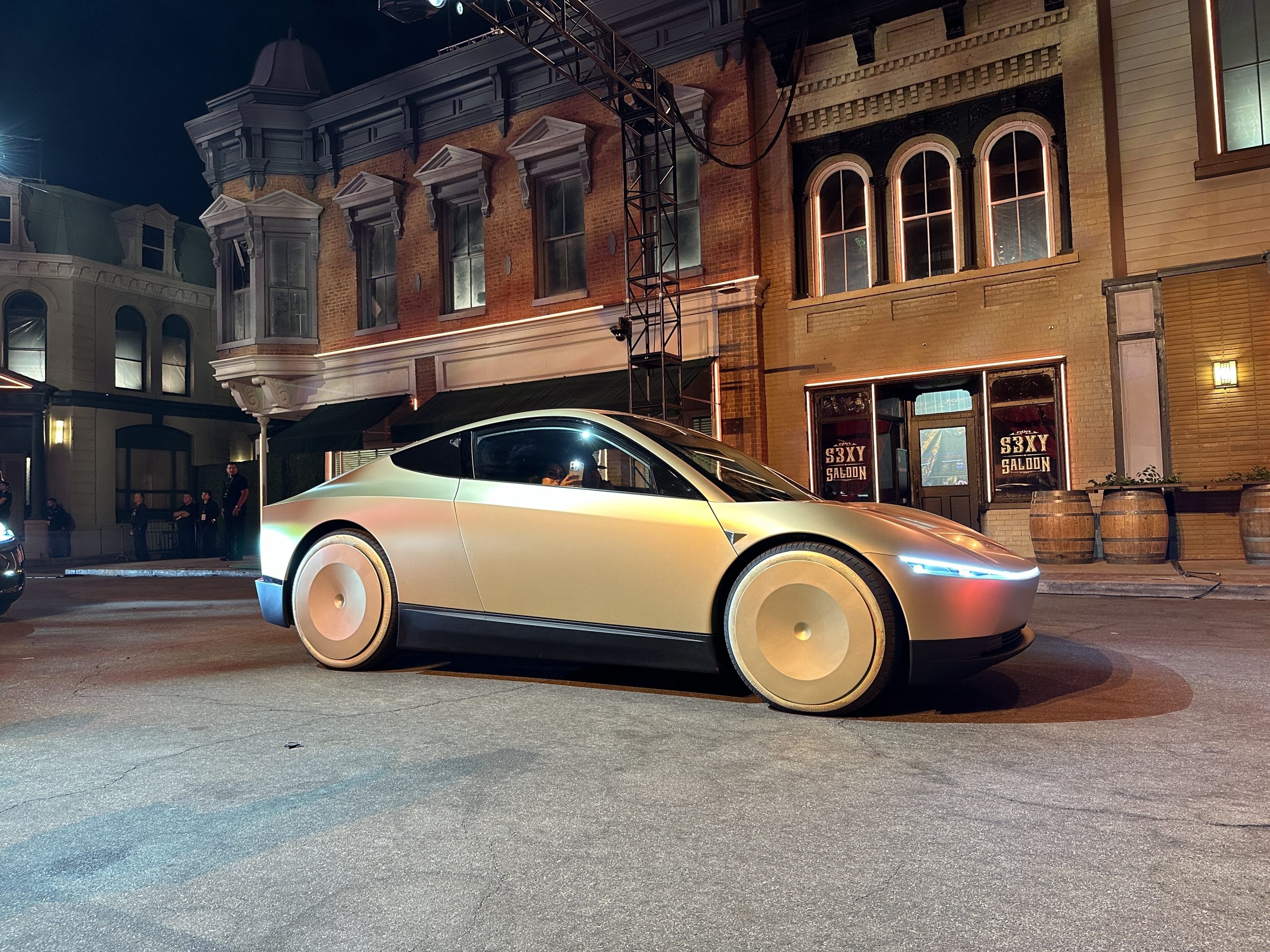
In a new report that cites people with “direct knowledge,” Tesla has apparently suspended a parts order for both the Cybercab and Semi that was set to come from China as a result of the tariff war between the country and the U.S.
Reuters reported this morning that the move was made as the 34 percent tariff on Chinese goods was raised to 145 percent. The report states that Tesla was “ready to absorb the additional costs when Trump imposed the 34 percent tariff on Chinese goods, but could not do so when the tariff went beyond that.”
This left Tesla in a situation where it had to make a decision, and ultimately chose to suspend shipping plans as a result.
Tesla, nor its CEO, Elon Musk, has responded to the report, so it is not known whether it has been confirmed. Tesla does not have a dedicated press relations division.
However, if it is true, Tesla would likely feel some repercussions from the parts delay for Cybercab, which it planned to launch in June with the start of a robotaxi ride-hailing platform in the City of Austin.
It is worth mentioning that this will not derail the plans completely, as the Model 3 and Model Y were also targeted to be a part of this initial rollout.
As far as the Semi, volume production is set to begin in early 2026. The first builds of the Semi’s high-volume design are slated to roll off production lines in Nevada late this year.
First Tesla Semi high-volume production builds expected this 2025
Tesla has responded to the tariffs in several ways, including halting the delivery of its Model S and Model X vehicles in China as the country imposed a 125 percent tariff as a retaliation against the United States.
It is no secret that Tesla is being impacted by the tariff situation, and Musk has been transparent about that. However, it is unknown whether it will begin to impact the company’s future projects, like the Semi and Cybercab.
Elon Musk
Tesla continues California domination despite slide in registrations
Tesla lost some of its market share in California but it still has a commanding lead.
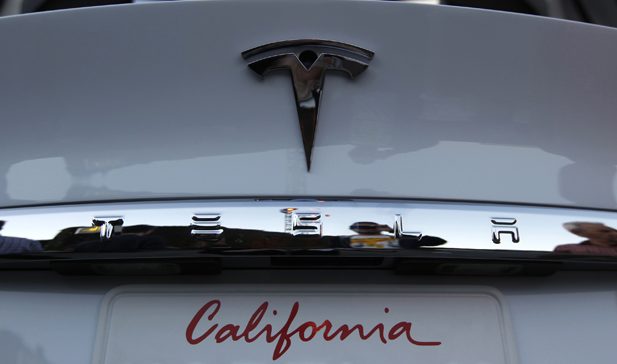
Tesla has continued its domination in the California auto market as the state’s New Car Dealers Association (CNCDA) has released data from the first quarter of 2025.
2025 is going to be one of the more difficult years to determine the outlook of the automotive sector due to the uncertain impact of tariffs and how much they will hinder overall growth.
However, we can break Tesla’s situation down a little further and explain why there were some Year-over-Year declines in registrations in California.
As a whole, Tesla registered 42,322 vehicles year-to-date through March, data from the CNCDA’s report shows. This is a 15.1 percent decrease from the 49,857 cars that had been registered by owners in the same time frame last year.
Tesla still owns 43.9 percent of the overall Zero Emissions Vehicles (ZEV) segment in California, down from 55.5 percent at this point last year. It is a decrease, but there is more to it.
The Top 25 BEV and PHEV models are led by the Model Y and Model 3, which counted 23,314 and 13,992 registrations, respectively. The third-place vehicle is the Honda Prologue with 4,493 registrations. The Tesla Cybertruck landed in 8th place with 2,282 registrations, and the Model X was 13th with 1,800.
The same quarter last year saw roughly 10,000 more registrations for the Model Y than this year, as Q1’24 saw the all-electric crossover accumulate 33,467 registrations. The decrease is due to Tesla’s switchover of production lines to the new Model Y build. Tesla said in its quarterly delivery report that it lost “several weeks” of production due to this changeover.
Tesla dominates in California but EV growth is the true winner
Interestingly, the Model 3 performed better than last year, as it only had 11,162 registrations through the same period in 2024. It had 13,992 registrations in California this year.
The question regarding Elon Musk’s political involvement and its impact on Tesla’s sales figures remains. Without surveying them individually, there is no way of knowing exactly how many people chose to go with another EV maker’s vehicle due to the politics. However, the Model 3’s slight bump is an encouraging look: it’s not all gloom and doom.
The CNCDA writes:
“Tesla’s troubles continue to worsen as Californians are giving the cold shoulder to the direct-to-consumer automaker (and controversial owner, Elon Musk). Registrations show a massive decline of 15.1 percent through March vs. this time last year. A year and a half of continuous quarterly declines proves this downward trajectory for Tesla is a lasting trend. The company’s market share also dropped by 11.6 percent at the end of Q1, now holding less than half of the California Zero Emission Vehicle (ZEV) market for the year.”
Most importantly, Tesla outpaced every other EV maker’s registration figures by a considerable margin, despite many analysts stating that there is irreparable brand damage.
Tesla had 42,322 registrations in California in Q1, significantly more than second-place Ford, which had 5,819 ZEV registrations in the Golden State through the first three months.
Despite what many are stating regarding Tesla’s “brand damage,” the company is still in control of the market substantially. It was always expected that Tesla’s market share, which sits at 43.9 percent, would fall slightly each quarter after more automakers had EVs to offer.
However, the company’s control still remains, at least for now.
-
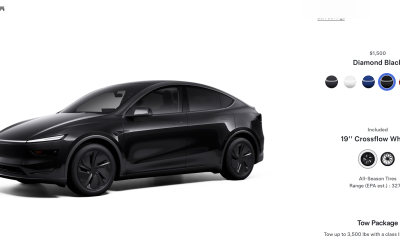
 News2 weeks ago
News2 weeks agoTesla rolls out new, more affordable trim of the Model Y Juniper in U.S.
-

 News2 weeks ago
News2 weeks agoTesla shares Optimus’ improved walk in new update video
-

 Elon Musk2 weeks ago
Elon Musk2 weeks agoTesla Germany reports 4,935 units sold in Q1 2025
-
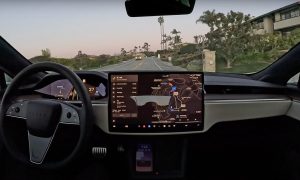
 News2 weeks ago
News2 weeks agoTesla expands Early Access Program (EAP) for early Full Self-Driving testing
-
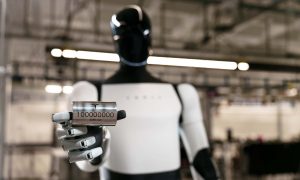
 News1 week ago
News1 week agoTesla celebrates key milestone for 4680 battery cell production cost
-

 News2 weeks ago
News2 weeks agoElon Musk will continue as DOGE adviser: VP Vance
-
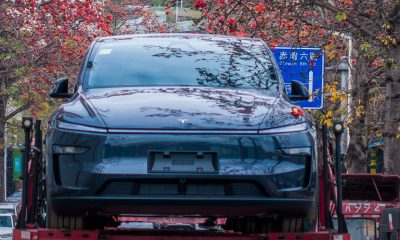
 News2 weeks ago
News2 weeks agoWells Fargo reiterates Tesla (TSLA) price target of $130
-
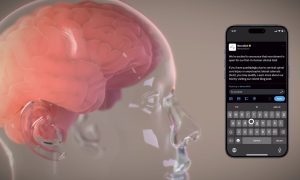
 Elon Musk2 weeks ago
Elon Musk2 weeks agoNeuralink’s Patient Registry is now open globally

